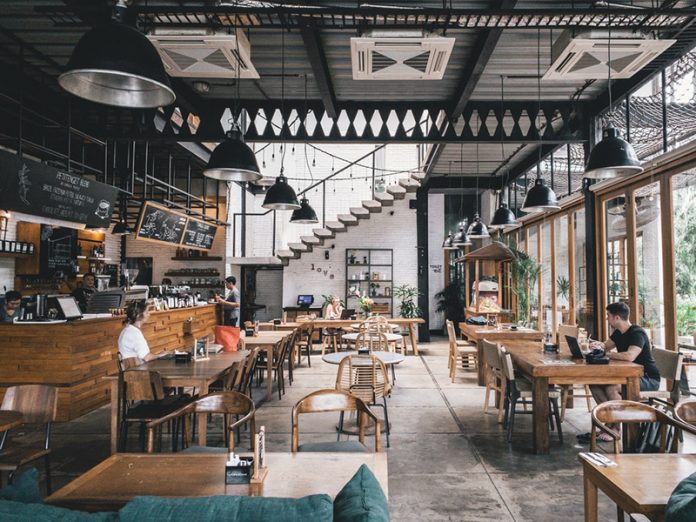By Johannes Boroh
There are many articles about business strategies on coping with the COVID-19 pandemic published in various journals, magazines, newspapers, and so forth. However, limited literature offers strategies utilising the Business Model Canvas (BMC) as a response to the pandemic condition. The BMC, or the Canvas, is developed by Alexander Osterwalder and Yves Pigneur1. But why BMC? It enables us to analyse both the revenue (i.e. front-end elements) and the cost sections of the Canvas (i.e. back-end elements), as well as to understand how they may relate to and support each other to achieve our objectives. Additionally, the Canvas also opens opportunities for benchmarking against the best practice.
This article discusses how we can employ BMC to identify and develop a few possible activities or schemes for the F&B industry during this difficult year, in particular, the restaurant and café businesses. We will find propositions for both the front-end and the back-end elements of BMC for restaurants and cafés, right from the customer segments to the cost structure elements. In other words, we will examine not only the concerns with the shrinking revenue but also the issues with managing the cost incurred at the back-end part of your BMC.
The activities identified and proposed may not necessarily arise from benchmarking against companies in the same industry, but may also be derived from different industries as we can benchmark regardless of the industry2. We have observed that this practice has been embraced on a few occasions. For instance, Southwest Airlines learned simplicity from GE’s Jack Welch3 and a hospital in Singapore further developed its patient care officers’ communication and customer handling skills by sending them to courses conducted by Singapore Airlines4. Also NBC, a US television network, adopted GE’s way to turn around its business, while GE itself adopted Motorola’s Six Sigma5.
Before we start, let us do a swift review of the Canvas. Osterwalder and Pigneur divide their model into two sides or sections. First, there are five elements in the front-end section: customer segments, value propositions, channels, customer relationships, and revenue streams. Second, there are four elements in the back-end section: key resources, key activities, key partnerships, and lastly, cost structure (Figure 1). In a simple illustration, your back-end elements must function as a way to support your front-end elements, such as the making and delivery of your value propositions to your customer segments, and, obviously how much you generate in the front end elements must be greater than how much you spend in the back-end elements.
Figure 1
BMC Elements The Customer Segments and Value Propositions
The Customer Segments and Value Propositions
As probably you already know, expanding your customer segments may help generate additional revenues during this pandemic era and a few reports have suggested this idea. For instance, a renowned fine dining restaurant group, Wolfgang Puck, was satisfied with its decision to extend its customer segments from the high-end customers who were happy with a USD 65 lobster to customer segments who could afford to buy a USD 39 set meal of chicken soup6. Similarly, a famous restaurant in Bali, which usually caters for Western customers, Casa Luna, has retargeted its customer segments to domestic tourists, since the paradise island has been closed to foreign tourists. Although there are significant drops in numbers of domestic tourists as well, at least the move helps the restaurant generate income7. Hence, if you have not done so, you may consider expanding your customer segments. If you are currently serving a nice market only, it is probably time to expand your patrons. Extend your customer segments to a wider demographic or behavioural scope, however, do not forget to adjust your prices if you offer your value propositions to lower social class segments.
Some publications reported changing value propositions, from what they usually offer to something different. It turned out working well for a few restaurants. Spago, the flagship restaurant of Wolfgang Puck, which usually does not have fried chicken on its menu, found out that its newest dish became its best seller8. Interestingly, a famous Balinese restaurant, known for its local and Indian cuisines, has started offering a western dish, pizza, which also works well for its home deliveries and takeaways9. Similarly, the Panera Bread chain has added staple groceries, salads, and sandwiches in their product range to generate additional revenues10. However, their success stories also went through a rapid trial-and-error process as one commonly encountered when launching a new idea11. Hence, if currently your restaurant or café does not cater to takeaways or home deliveries, you may consider giving it a try.
Value Propositions, Channels, and Key Partners
If you have not offered any delivery services yet, you may think of adding it as one of your value propositions. Your restaurant may not need a dedicated fleet of a delivery team, like what we see in McDonalds or Pizza Hut, but you may optimise your key partners, such as Deliveroo, DoorDash, Foodpanda, GoFood, UberEats, and so forth, to deliver orders to your customers. You may also consider having your business registered in their apps or websites to increase your visibility and to reach broader customer segments.
Other potential key partners that may serve out as your channels too are supermarkets, minimarket, or both, where you can offer certain ready-to-eat dishes available at their premises, be it in the form of frozen meals, freshly made pastries, etc. Similar to what we have discussed above, you may also need to attempt a rapid trial and error to find out which dishes or items may work better.
Customer Relationships, Key Resources, and Key Partners
Your customer relationships element should be utilised to its fullest through your social media, such as your Facebook, Instagram, TikTok, Twitter, WeChat, Whats App, or even your email. To enhance your social media engagements further, you may consider involving online influencers, as we can see a few successes of this approach in other industries. One example is Lin Qingxuan, a cosmetics company in China. Despite closing down 40 percent of its physical stores, including all stores in Wuhan, Lin Qingxuan saw a 120 percent increase in its sales in February 2020 over the same period in 201912.
If the budget is likely to be a hindrance factor in engaging those online influencers with gigantic followers, then you may optimise your key resources and key partners to support your customer relationships element. On the one hand, you can ask your employees, one of your key resources, to share your new value propositions on their social media platforms. On the other hand, you can ask your key partners, which may include your families, relatives, and colleagues, to do the same as well.
Revenue Streams, Key Partners, and Customer Segments
Since your traditional revenue generation streams are likely to be affected by the COVID-19 pandemic, you have to explore other means of revenue streams to keep your front-end elements generating some income (Figure 2). In conjunction with your key partners, you may seek subsidies from local or central governments, or both. Selling ready-to-eat meals at your other key partners, such as supermarkets, petrol stations, and minimarkets, may also generate alternative revenues. Another extraordinary case of creating a new source of revenue is by partnering with totally unrelated key partners (businesses), as we saw in the Starbucks case. The giant coffee house company has crossed into the entertainment business by selling music with companies such as Apple and Spotify.
Uncommon revenue generations may also link back to your customer segment element. A restaurant in Bali, Indus, has one unconventional source of revenue, which is donations from its loyal customers13. Another possible course to do outreach to customer segments living in other cities or towns. A few home-scale businesses in Jakarta, Indonesia, that I know of personally, have been delivering their freshly baked cakes or cookies to customers living in other cities at affordable fees, thanks to the disruptors in the courier/delivery industry, i.e. Your other key partners, such as Uber or Gojek in Southeast Asia.
You may also be able to generate additional revenue by upselling, which is usually done when your front-line employees ask customers to upsize their drinks or to buy lunch packages or dessert after their meals, and so on. Another approach to keep generating revenues can be borrowed from the hotel industry, where often we have to pay in advance when making a room reservation. Similarly, in the restaurant and café industry, to motivate people to buy from your business, you can tell customers that they can use, for instance, 40 percent of their bills today as deposits for their next visits. Remember that the primary objective is now to keep the cash flowing in.
Figure 2
Interactions Between RS-CS-KP Components Key Partners and Key Activities
Key Partners and Key Activities
Since your front-end elements, particularly revenue generation, may have been diminishing substantially, you must manage your back-end elements, i.e. the costs incurred in this section of your Business Model Canvas, as well. Let us now examine how your BMC’s back-end elements can interact with each other to cope with the current condition. As we have observed, many restaurant and café owners have been taking this particular approach to deal with the problem, reducing staff working hours or regulating their shifts to compensate for the reduced activity in their restaurants or cafés, although the move may not be sufficient.
Another option related to your key activities is to share your kitchen with other restaurants or cafes nearby, where you can take turn every week or month. A similar principle is the cloud kitchen, which became more popular last year, particularly among food delivery players. We may notice that many food delivery companies, such as DoorDash in the US14, Deliveroo, Foodpanda, and so forth15, have adopted this cloud kitchen approach. The significant factor here is that you may have to allow other restaurants or cafés to ‘sneak’ into your kitchen and vice versa. Nevertheless, during this period, out-of-the-box concept should be carefully studied.
You can also consider other restaurants or cafés as your key partners, instead of as competitors, and create alliances when purchasing raw materials. During this low-demand period, you can still purchase your raw materials in bulk to get attractive deals from your suppliers by combining orders with the other restaurants or cafés around your establishment. If nobody around you has ever initiated the idea, then you can probably start.
Key Resources and Key Partners.
Currently, many restaurant and café owners have been taking these options too: Unpaid leaves, furloughs, or even retrenchments to reduce the excess key resources due to reduced activities. However, instead of laying off your key resources, which may include your well-trained and experienced employees, you may consider offering them jobs in other industries. Instead of letting them find their own ways out, your company can do them a favour by seeking collaborations with other companies. McDonald’s in Germany is reportedly taking this approach by permitting its employees to work for a major grocery store16 and Singapore Airlines deploys its staff, including cabin crew and pilots, to other companies and government institutions.
One other common practice is consolidating your branches. Restaurants with many establishments tend to operate only the strongest branch, as we have seen in the case of the Woflgang Puck Fine Dining group17 and a renowned Balinese restaurant on the island, Bebek Bengil18. Additionally, if you have a strong brand, you can leverage the power of that brand when negotiating with your key partners, for instance your suppliers, financial institutions, and so forth.
Cost Structure
The last element in your back-end part of BMC is the cost structure. Here, we can examine all other costs that may not directly be related to key activities or key resources, which some of you may already have done. For instance, are there any insurance bills that can be deferred? Can you apply for tax relief from local or central governments, or both? What about your mortgage, building rental or vehicles and other equipment? Can you negotiate with the electricity company too? The list will go on and on.
Conclusions
By utilising the Business Model Canvas, we can scrutinise not only your cost-related elements, but also your revenue generators and how they can support each other. You and your team may sit down together to examine every single element of your Canvas and see what else can be done with it. In the end, what we all can hope is that looking at both sides of your BMC will help your business cope better with unfavourable business conditions that arise because of COVID-19 or whatever we might encounter in the future.
About the Author
 Johannes Boroh is a Doctorate in Business Administration graduate from Bocconi, Milan. His research is on business strategy, focusing on business models and disruptive innovations. He has almost 30 years of experience in the hospitality industry, particularly the airline industry. Johannes is also one of the mentors for the final-year undergraduate business students at the University of South Australia.
Johannes Boroh is a Doctorate in Business Administration graduate from Bocconi, Milan. His research is on business strategy, focusing on business models and disruptive innovations. He has almost 30 years of experience in the hospitality industry, particularly the airline industry. Johannes is also one of the mentors for the final-year undergraduate business students at the University of South Australia.
References
- Osterwalder, A., & Pigneur, Y. (2010). Business model generation: a handbook for visionaries, game changers, and challengers. NJ Canada: John Wiley & Sons.
- Hubbard, G. (2000). Strategic Management: thinking, analysis and action. NSW Australia: Pearson Education Australia.
- Freiberg, K., & Freiberg, J. (1998). Nuts!: Southwest Airlines’ Crazy Recipe for Business and Personal Success: Broadway Books.
- Mui, R. (2020, 3 Nov). SIA Sets Up Academy to Offer External Training Programmes. The Business Times. Retrieved from https://www.businesstimes.com.sg/companies-markets/sia-sets-up-academy-to-offer-external-training-programmes.
- Slater, R. (2004). Jack Welch on Leadership. New York, USA: McGraw-Hill.
- Groysberg, B. (2020). Wolfgang Puck on Leading His Restaurants Through the Pandemic Harvard Business Review.
- Rayda, N. (2020, 17 Sep). 5 Bali restaurants popular with tourists and how they are faring during COVID-19. Channel News Asia. Retrieved from https://www.channelnewsasia.com/news/asia/indonesia-bali-restaurants-popular-tourists-coping-covid-19-13113326.
- See 5.
- See 6.
- Wade, M., & Bjerkan, H. (2020). Three Proactive Response Strategies to COVID-19 Business Challenges. MIT Sloan Management Review.
- Bland, D. J., & Osterwalder, A. (2020). Testing Business Ideas. New Jersey: Wiley.
- See 9.
- See 6.
- Canales, K. (2020, 21 Oct). Ousted Uber cofounder Travis Kalanick has reportedly spent $130 million on his ghost kitchen startup. Here’s what it’s like inside one of the secretive locations. Business Insider. Retrieved from https://www.businessinsider.com/cloud-kitchens-travis-kalanick-san-francisco-location-address-pictures-2019-11.
- Quek, E. (2020, 4 Oct). Cloud or ghost kitchens take bigger bite of Singapore’s food delivery market. The Strait Times. Retrieved from https://www.straitstimes.com/lifestyle/food/cloud-kitchens-take-bigger-bite-of-the-market.
- See 9.
- See 5.
- See 6.





































